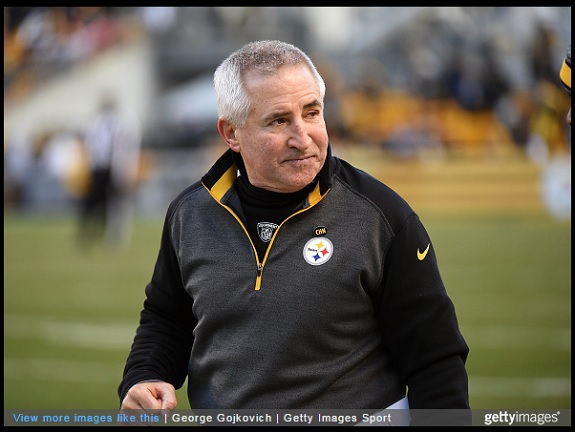Yesterday, Alex Kozora turned his focus in his All-22 look series on an aspect of the game that simply does not get enough attention generally, unless, as with offensive linemen, somebody makes a mistake.
The topic was special teams, and he looked specifically at Pittsburgh Steelers wide receiver Darrius Heyward-Bey’s usage as the contain player on the team’s kickoff coverage units, a role that he served well, albeit in obscurity.
The point of emphasis here can be better portrayed in the light of the reactions of many to the Steelers’ re-signing of Heyward-Bey, wondering what use he could possibly have for the team, who would at this point, at best, be the fourth wide receiver, and more likely the fifth following the draft.
Why bother continuing to toy with this former first-round draft bust that even last season was able to contribute very little on offense? His two most significant plays on offense were a drawn pass interference call and a fumble after a reception. Is that worth a roster spot?
Not in itself, but Heyward-Bey, like generally all of the fringe roster players on anybody’s team, serve a valuable purpose outside of their traditional roles on offense and defense. In other words, there are more roster spots for special teams purposes than just the place kicker, the punter, and the long snapper.
We know this, of course, but we sometimes fail to recognize it, and often choose not to appreciate it, especially if the team ends up cutting a player or losing him from the practice squad that could have been on the roster if not for the 53rd man that is a special teams contributor.
But not assembling a roster with special teams in mind would be an absolute disaster. Many of San Diego’s recent teams have negatively suffered due to their poor showings on special teams. Miami last season also struggled more than necessary had they gotten better special teams play.
If you build a roster without including your special teams pieces, you’re basically only preparing for two-thirds of the game.
As Brett Keisel once said, so much of what makes a successful special teams player is the ‘want to’, and it’s worth noting that he said this in a year where the team was struggling on special teams so much that they put their starters on kick coverage.
The fact of the matter is that not everybody has the want to for special teams success. The Steelers are fortunate to have a solid group of those in players like Antwon Blake, Shamarko Thomas, Ross Ventrone, Terence Garvin, and Robert Golden, the majority of whom have made very little contribution on defense as of yet in their multi-year careers, but are still around because of what they offer on special teams.
Just think about what the Steelers’ punt coverage units may have looked like last season with Brad Wing’s inconsistent showings if he didn’t have the likes of Blake and Ventrone serving as gunners. If that doesn’t tell you the value of special teams in the roster-building process, then I’m not sure what might convince you.








